Lachlan Currie
In-situ animal behavior classification using knowledge distillation and fixed-point quantization
Sep 09, 2022

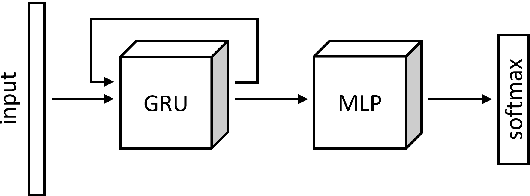
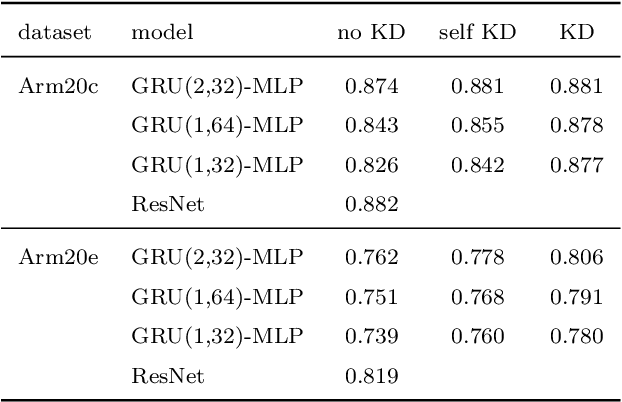
Abstract:We explore the use of knowledge distillation (KD) for learning compact and accurate models that enable classification of animal behavior from accelerometry data on wearable devices. To this end, we take a deep and complex convolutional neural network, known as residual neural network (ResNet), as the teacher model. ResNet is specifically designed for multivariate time-series classification. We use ResNet to distil the knowledge of animal behavior classification datasets into soft labels, which consist of the predicted pseudo-probabilities of every class for each datapoint. We then use the soft labels to train our significantly less complex student models, which are based on the gated recurrent unit (GRU) and multilayer perceptron (MLP). The evaluation results using two real-world animal behavior classification datasets show that the classification accuracy of the student GRU-MLP models improves appreciably through KD, approaching that of the teacher ResNet model. To further reduce the computational and memory requirements of performing inference using the student models trained via KD, we utilize dynamic fixed-point quantization through an appropriate modification of the computational graphs of the models. We implement both unquantized and quantized versions of the developed KD-based models on the embedded systems of our purpose-built collar and ear tag devices to classify animal behavior in situ and in real time. The results corroborate the effectiveness of KD and quantization in improving the inference performance in terms of both classification accuracy and computational and memory efficiency.
Animal Behavior Classification via Deep Learning on Embedded Systems
Nov 24, 2021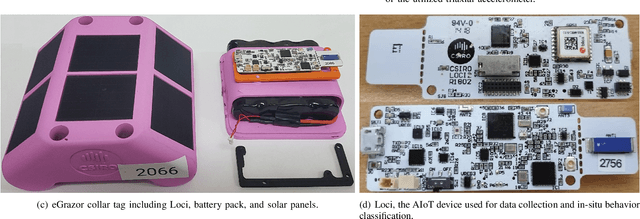
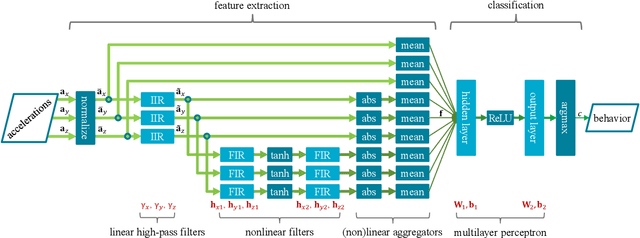

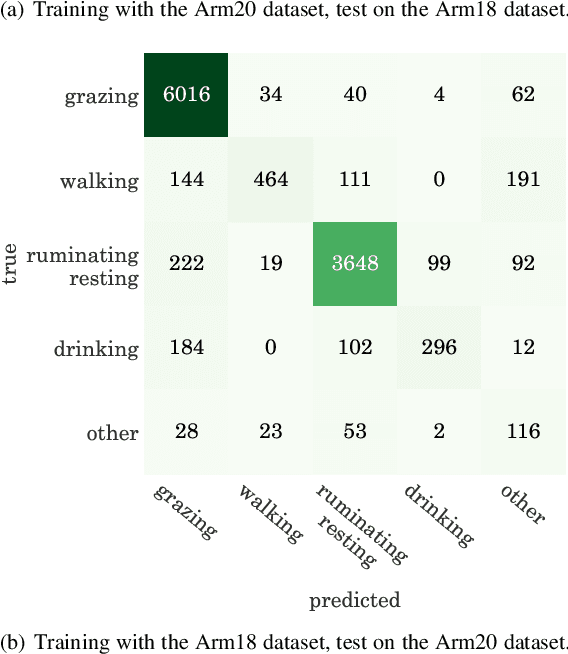
Abstract:We develop an end-to-end deep-neural-network-based algorithm for classifying animal behavior using accelerometry data on the embedded system of an artificial intelligence of things (AIoT) device installed in a wearable collar tag. The proposed algorithm jointly performs feature extraction and classification utilizing a set of infinite-impulse-response (IIR) and finite-impulse-response (FIR) filters together with a multilayer perceptron. The utilized IIR and FIR filters can be viewed as specific types of recurrent and convolutional neural network layers, respectively. We evaluate the performance of the proposed algorithm via two real-world datasets collected from grazing cattle. The results show that the proposed algorithm offers good intra- and inter-dataset classification accuracy and outperforms its closest contenders including two state-of-the-art convolutional-neural-network-based time-series classification algorithms, which are significantly more complex. We implement the proposed algorithm on the embedded system of the collar tag's AIoT device to perform in-situ classification of animal behavior. We achieve real-time in-situ behavior inference from accelerometry data without imposing any strain on the available computational, memory, or energy resources of the embedded system.
 Add to Chrome
Add to Chrome Add to Firefox
Add to Firefox Add to Edge
Add to Edge